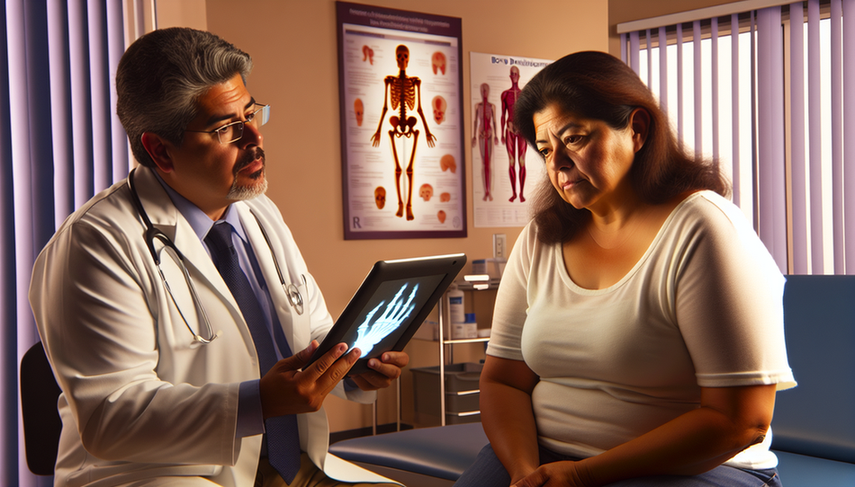Osteoporosis Diagnosis: Understanding DEXA Scans, T-Scores, and FRAX for Osteoporotic Fractures

Osteoporosis is a skeletal disease characterized by a decrease in bone mineral density (BMD) and an increased risk of osteoporotic fractures. With the aging global population, osteoporosis has become a significant public health issue. Early osteoporosis diagnosis is crucial to prevent severe complications, and the DEXA scan (dual-energy X-ray absorptiometry) is the standard tool for assessing BMD and determining the T-score, a key indicator in the diagnosis of osteoporosis.
Diving Deeper into Diagnosis and Risk Factors
The DEXA scan is the most widely used method to measure BMD and calculate the T-score, which compares the patient's bone density with that of a healthy young adult. A T-score of -2.5 or lower indicates osteoporosis, while a T-score between -1 and -2.5 suggests osteopenia, a less severe condition that also requires medical attention.
In addition to the DEXA scan, it is essential to consider the risk factors that may predispose an individual to develop osteoporosis. These factors include advanced age, female sex, low body mass index, smoking, excessive alcohol consumption, and prolonged use of glucocorticoids. Recent studies have highlighted the importance of assessing fracture risk using tools like FRAX, which integrates multiple risk factors to provide a 10-year fracture risk estimate.
Identifying these risk factors is crucial for implementing appropriate prevention and treatment strategies. For example, a study conducted on postmenopausal women demonstrated that smoking is an independent risk factor for osteoporosis, while regular physical activity acts as a protective factor.
Conclusions
The diagnosis of osteoporosis through DEXA scans and the evaluation of risk factors are essential components in managing this disease. The combination of objective BMD measurements and the consideration of clinical risk factors allows for the identification of patients who will benefit most from preventive and therapeutic interventions. Implementing these strategies can significantly reduce the morbidity and mortality associated with osteoporotic fractures.
Referencias
- [1] AMERICAN ASSOCIATION OF CLINICAL ENDOCRINOLOGISTS/AMERICAN COLLEGE OF ENDOCRINOLOGY CLINICAL PRACTICE GUIDELINES FOR THE DIAGNOSIS AND TREATMENT OF POSTMENOPAUSAL OSTEOPOROSIS-2020 UPDATE
- [2] The clinical diagnosis of osteoporosis: a position statement from the National Bone Health Alliance Working Group
- [3] Risk Factors for Osteoporosis in Postmenopausal Women
- [4] Epidemiology, etiology, and diagnosis of osteoporosis
Created 2/1/2025
